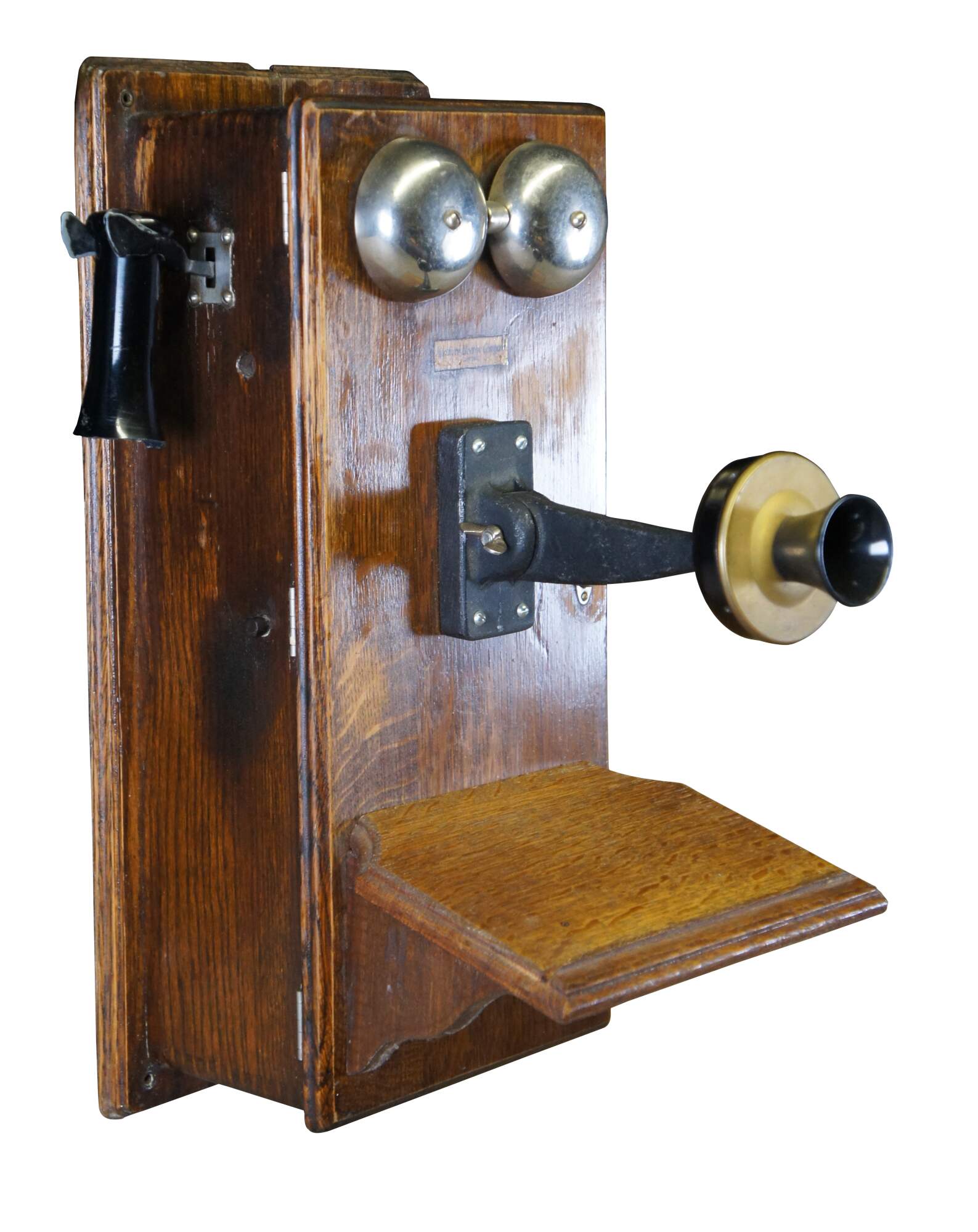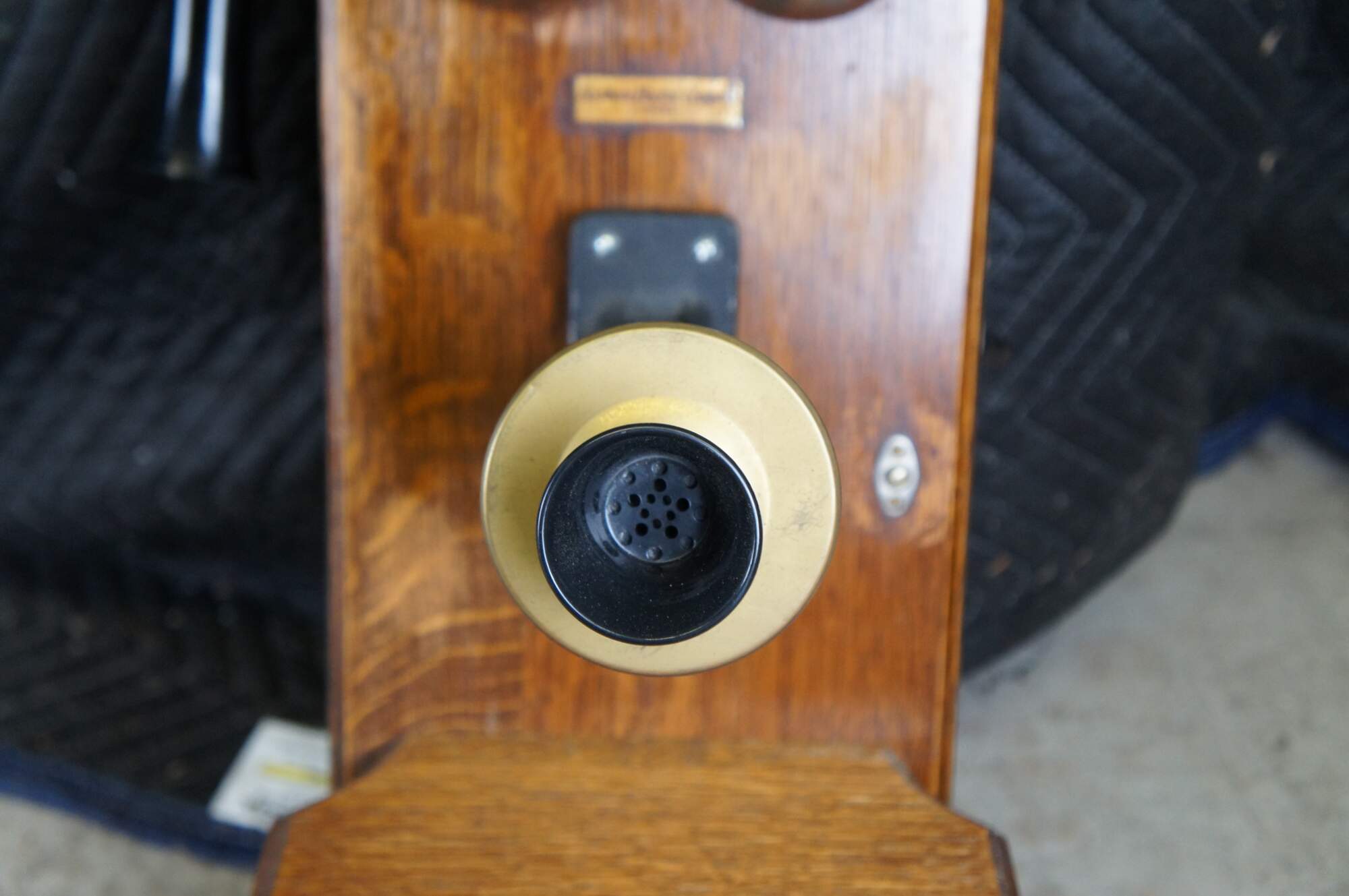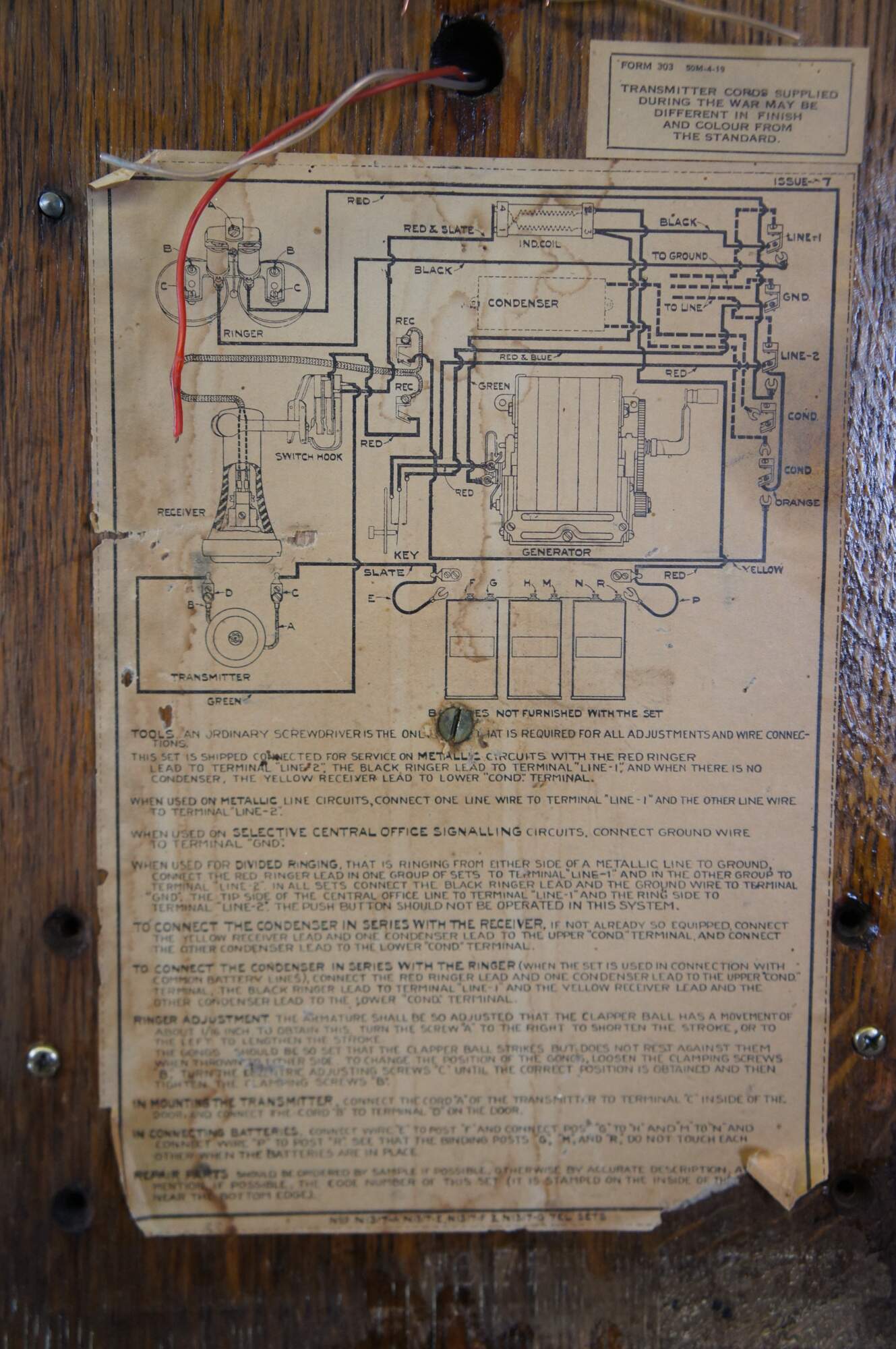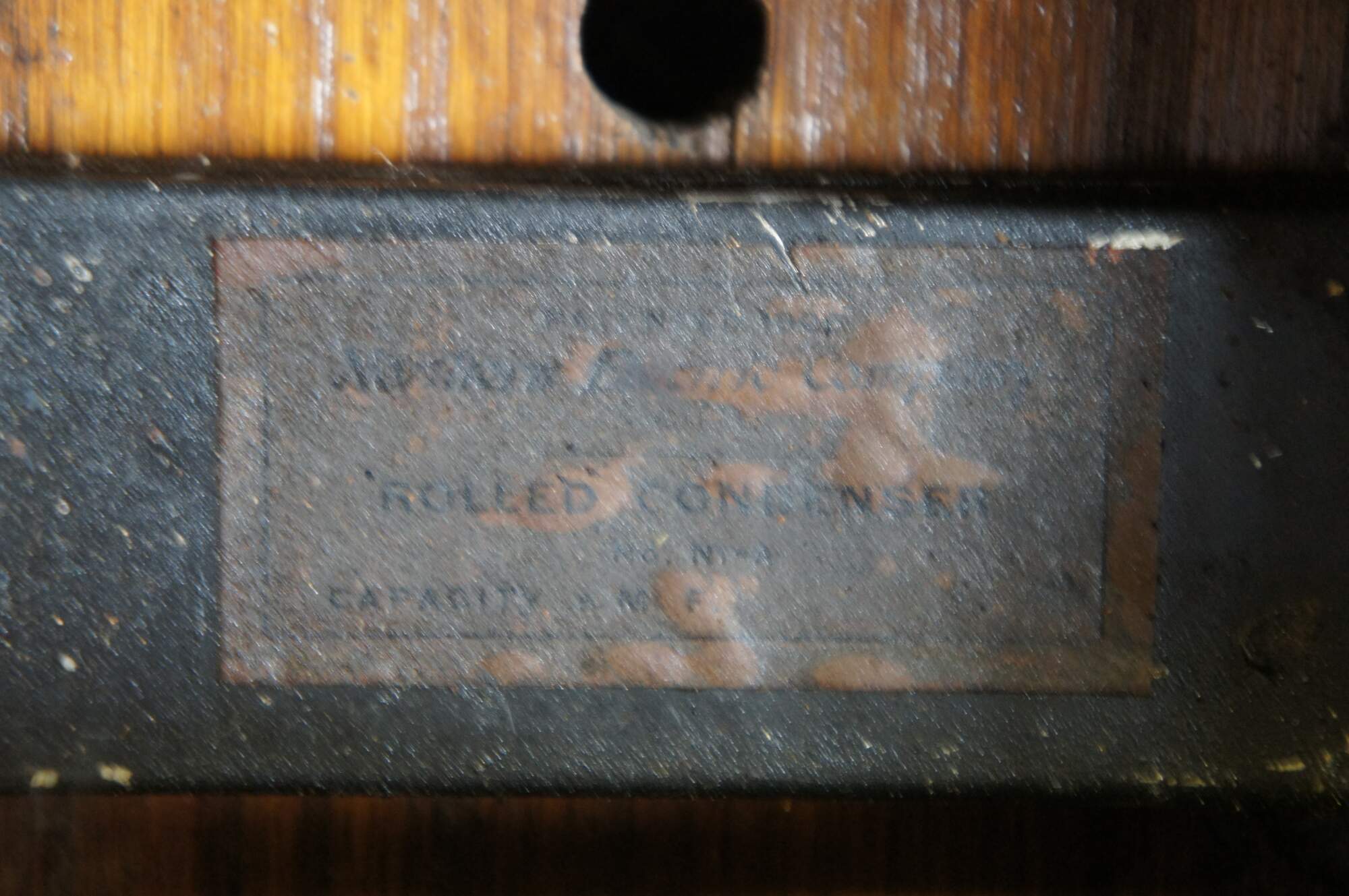
Antique Northern Electric Company Quartersawn Oak Phone Telephone 20"
$376.00
Shipping:
Free Shipping Included
Delivery:
Estimated 2-15 Business Days
Payments:
Credit Card, Check, Cash, PayPal, Apple Pay, Venmo
Returns:
30 Days 100% Money Back Guarantee, Buyer Pays Return Shipping
Description
Antique Northern Electric Company quartersawn oak hand crank wall phone with writing slope ledge.
Northern Telecom, as it is known by today, marked its 100th anniversary in 1995. Since its modest beginnings in the late 1800s, it has evolved from being a small Canadian telephone equipment supplier to an architect of a world of networks. This achievement is not surprising, however, when you consider its history of anticipating change and taking full advantage of it. Here is a glimpse into the past.
Northern Telecom entered its second century in 1995. The company basically started by accident. An accident of Canadian patent law.
Back in 1881, a former New England sea captain named Charles Fleetford Sise, who had come to Montréal in 1880 to create The Bell Telephone Company of Canada, was writing to Theodore Vail, who was then-president of the National Bell Telephone Company of Boston. Vail was also a major shareholder in the fledgling Canadian telephone business, and would be best-remembered in the history books as the creator of the nationwide American Telephone and Telegraph (AT&T) network.
Sise needed Vail's help. He was worried because his domestic supply of telephone equipment had vanished with the death from tuberculosis of James Cowherd, who operated the world's first telephone manufacturing plant. Sise tried to find other Canadian suppliers, but without success. If he couldn't find an alternative Canadian supplier he would lose the Canadian patent rights. Had it not been for this law, Sise may not have been so determined to start his own manufacturing plant.
"We should ... be doing this work in our own shop, where we have one or two very good workmen," he wrote to Vail. Within months, Sise had hired an experienced foreman from Vail's Boston plant, a man named Charles W. Brown, and rented two floors of a building in Montréal. While a separate company called Northern Electric wouldn't actually exist for another thirteen years, it was conceived with the arrival of Brown, the rental of those two floors, and the creation, in 1882, of the Manufacturing Branch of The Bell Telephone Company of Canada.
The Early Years
To really understand how Northern Telecom got started, you have to go back to Scottish-born inventor Alexander Graham Bell himself, who invented the telephone in 1874 at his parent's home in Brantford, Ontario. Bell patented his new invention in the United States in 1876, and in Canada in 1877, where 75 percent of the Canadian telephone patent was assigned to his father, Melville.
Within two years, Melville Bell had sold his share of the Canadian Bell patent to National Bell, the predecessor of AT&T. And in 1880, The Bell Telephone Company of Canada was formed. The Manufacturing Branch flourished and, in 1895, was incorporated as a separate company, called Northern Electric and Manufacturing Company Limited.
That's the true, legal ancestor of today's Northern Telecom.
In 1899, The Bell Telephone Company of Canada purchased a Montréal wire and cable factory which later would be called the Imperial Wire & Cable Company Limited. In 1914, the two companies amalgamated to form The Northern Electric Company Limited. It was owned 44 percent by Western Electric, which was the manufacturing subsidiary of AT&T Company of the United States, and the remainder by Bell of Canada.
For the first fifty years of the company's existence, Northern Electric essentially manufactured equipment based on designs and processes licensed from Western Electric. It made products primarily for the use of the Bell Telephone Company of Canada, although it did make some consumer electronics products, such as radios, television sets, console radio-phonographs, hi-fi amplifiers, movie theater sound equipment, and fire and police call boxes--even Hammond organs.
Birth of R&D
The Western Electric involvement continued until the Consent Decree of 1956. Under the decree, Western Electric terminated its patent and licensing relationship with Northern Electric. Northern Electric began to achieve technical independence in 1957 by creating its own research and development facilities in Belleville, and, in 1959, established Northern Electric Research and Development Laboratories in Ottawa, Ontario. At the same time, Bell Canada began stepping up its own development activities.
The sixties were an era of self-examination. If Northern Electric was going to survive as a company, it had to become leaner, more focused, and more innovative. In response to the latter, Northern Electric and Bell Canada merged their R&D activities in 1971 to form BNR. This merger happened a critical time. Engineers were already talking about the feasibility of electronic telephone switches. In the early seventies, BNR would do more than talk. It began developing what it called the "E-thing," an electronic switching system. By late 1972, Northern Telecom had its first electronic switch on the market, the SG-1--also known as PULSE--private branch exchange (PBX). Within three years, some 6,000 had been sold.
But the real story behind the "E-thing" was its evolution to an all-digital switch. That first all-digital switch would be the SL-1 PBX. The SL-1 design was so successful, it was logical to extend the new powerful digital technology to the telephone central office. Thus, BNR developed the DMS-10 for small central offices in 1977, followed two years later by the DMS-100 digital switch for large central offices.
In a few bold strokes, the company leapfrogged over its competition. The development of the DMS-100 digital central office switch, combined with the breakup of AT&T and the formation of the regional Bell holding companies in the United States in 1984, resulted in explosive growth through the rest of the 1980s.
Global Growth
The rapid growth in the United States became a model for further expansion in the Caribbean, Europe, and the Pacific Rim. The company quickly found itself a major supplier in the Caribbean. In Europe, Northern Telecom gained an important foot-in-the-door with products, such as the SL-1 fully digital PBX, and later, the DPN family of digital data packet switching systems, which Northern Telecom successfully marketed to governments and private banks around the world.
In Japan, the DMS-10 proved to be the decisive factor in Northern Telecom's ability to become the first non-Japanese supplier to Nippon Telegraph and Telephone (NTT). And, a few years later, it opened the doors for growth in the burgeoning markets of China and Eastern Europe.
The changes marked by Northern Telecom's response to globalization, new directions in the business, and new organizational structures were symbolized at the beginning of 1995 with a new logo: NORTEL.
Condition
Fair antique condition, wear and distressing commensurate with age and use, scuffing, wear, finish loss, broken ear piece, not tested, not currently working.
Dimensions
20" l x 9" x 12" d














